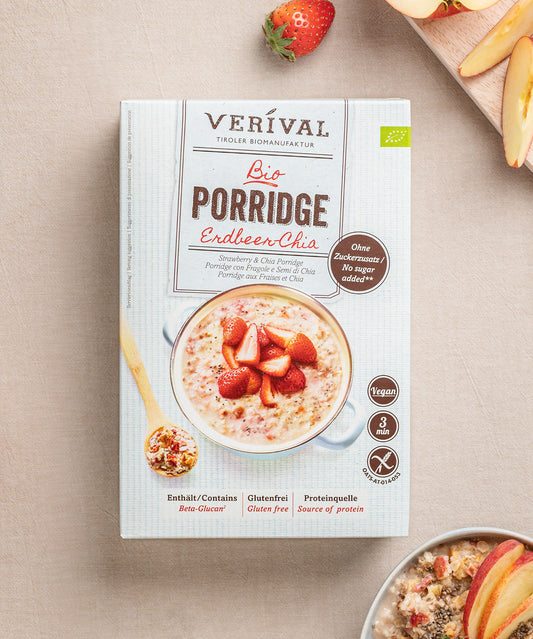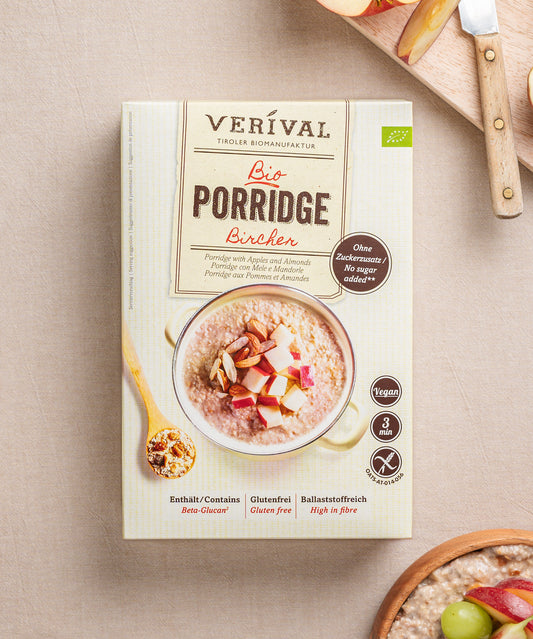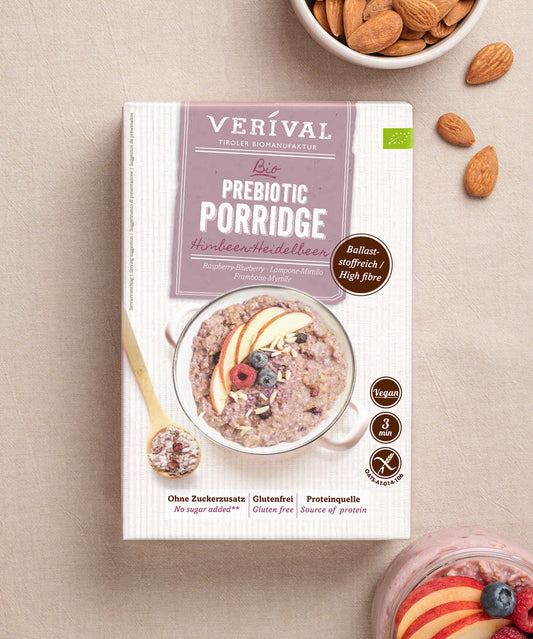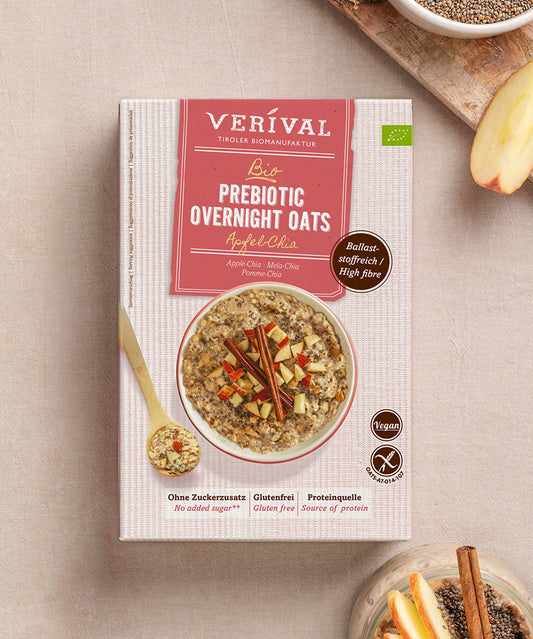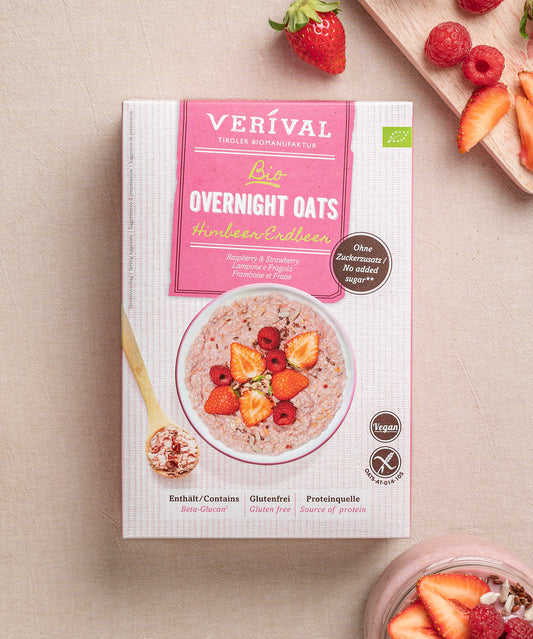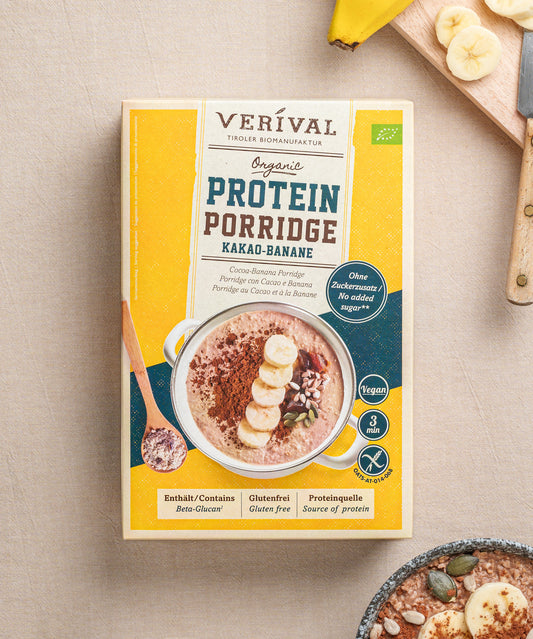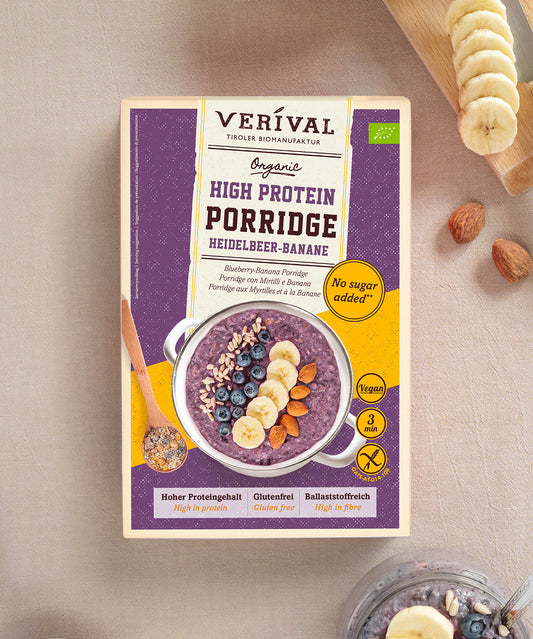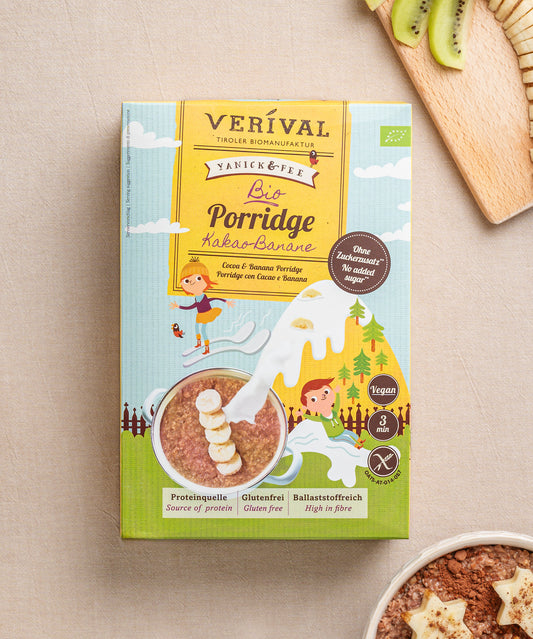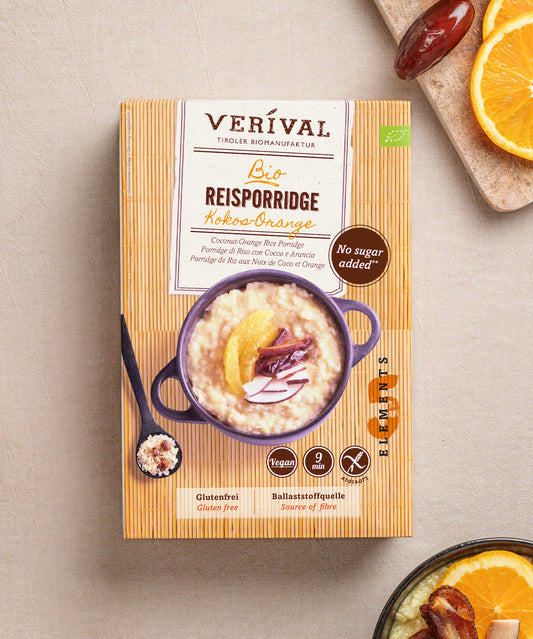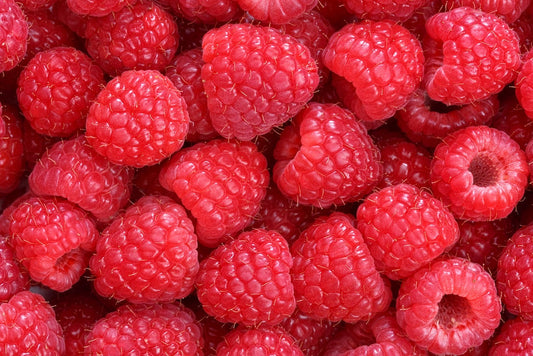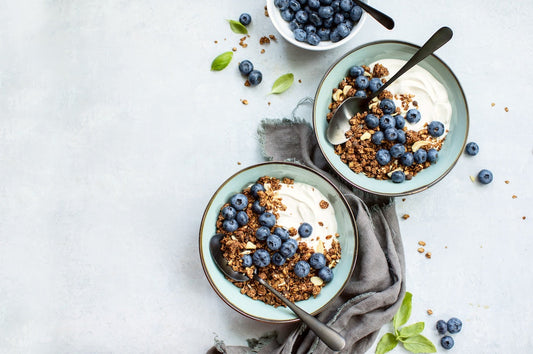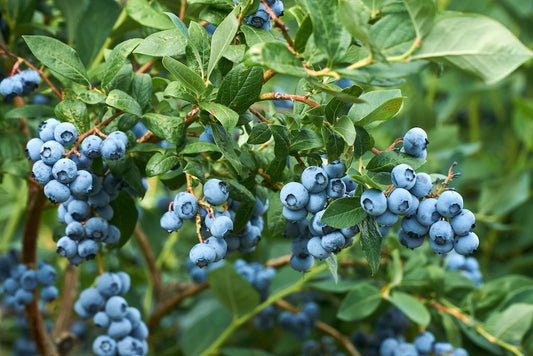Dietary fiber, sometimes referred to as the “forgotten” food components, is often overlooked, but it is an integral part of a healthy diet. It is present in plant-based foods and belongs to the group of carbohydrates.
However, they do not behave like conventional carbohydrates, as they cannot be fully digested by the human body. Dietary fibers cannot be processed by the enzymes in the gastrointestinal tract, so they arrive undigested in the large intestine.
However, the indigestibility of these plant fibers is not a disadvantage. On the contrary, it is what makes dietary fiber so valuable. They provide a lasting feeling of satiety, which can contribute to weight management. In addition, they play an important role in regulating blood sugar levels and cholesterol levels, which has a positive effect on heart health.
The amount of fiber in food is measured in grams. The German Nutrition Society recommends a daily fiber intake of at least 30 grams for adults. Unfortunately, many people do not reach this recommendation, mainly due to a low intake of fiber-rich foods.
Below, we will take a deeper dive into the world of fiber, describe its different types, highlight its health benefits, and show you how you can increase your fiber intake by making conscious food choices.
The path to a healthy diet is often easier than you think, and understanding the role of fiber is an important step along that path.
Dietary fiber – read more about fiber-rich nutrition
The two types of fiber and their role in the body
Soluble fiber and its role in cholesterol and blood sugar control
Soluble fiber, as the name suggests, dissolves in water to form a gel-like substance in the digestive tract. It is found in a wide variety of foods, including fruits, vegetables, and legumes. Inulin and pectin are two prominent examples of soluble fiber found in foods such as artichokes, plums, and broccoli.
Their gel-like consistency allows soluble fiber to perform a number of important functions in the body. One of these is controlling cholesterol levels. Soluble fiber binds bile acids needed for cholesterol production in the intestines. These bound bile acids are then excreted from the body. To make up for these losses, the body uses cholesterol to produce more bile acids, resulting in an overall lower cholesterol level.
In addition to controlling cholesterol levels, soluble fiber also plays a role in regulating blood sugar levels. They delay gastric emptying and ensure a slower and more even absorption of glucose from food into the bloodstream. This helps to reduce blood sugar spikes after meals and can be particularly helpful for people with diabetes.
In addition to binding bile acids and regulating blood sugar levels, soluble fiber is fermented by the gut flora in the large intestine, producing short-chain fatty acids. These fatty acids have several health benefits, including promoting gut health and possibly reducing the risk of certain types of cancer.
Including foods high in soluble fiber in your diet is an easy and effective way to manage your cholesterol and blood sugar levels. An example of a high-fiber meal could be a breakfast of oatmeal and plums, followed by a lunch of broccoli and artichoke soup. By consciously choosing foods that are high in soluble fiber, you can significantly support your health.
Soluble fiber - find out more now!
Insoluble fiber and its importance for intestinal health
Insoluble fiber does not dissolve in water and thus largely retains its shape during the digestive process. You can find this type of fiber in whole grain products, nuts, seeds, and certain vegetables such as Brussels sprouts and broccoli. A well-known example of insoluble fiber is cellulose.
Insoluble fiber has the important task of supporting the function of your gastrointestinal tract. It increases the volume of your stool and thus facilitates defecation. This can help to prevent constipation and ensure regular and healthy bowel function.
In addition to aiding in bowel movements, insoluble fiber also plays a crucial role in the health of your gut flora. It serves as a food source for certain types of gut bacteria. These bacteria ferment the fiber, producing beneficial short-chain fatty acids in the process. These fatty acids help maintain a healthy gut and gut flora and may even reduce the risk of certain health problems, including colon cancer.
Insoluble fiber is an essential food component for maintaining gut health. By including foods rich in insoluble fiber in your diet, you can help keep your gastrointestinal tract healthy and promote your overall well-being. Enjoying wholegrain bread with meals or snacking on nuts and seeds throughout the day are simple ways to increase your intake of this important fiber.
Insoluble fiber - find out more now!
Healthy fiber-rich foods and their benefits
Legumes and whole grains
They are among the best sources of fiber in our diet. Products such as chickpeas and lentils are full of fiber, which increases satiety and at the same time has a positive influence on our intestinal flora.
Whole grain products, including whole grain bread, whole grain pasta or oats, should not be missing from your diet either. Compared to their white alternatives, they contain significantly more fiber and other valuable nutrients. Next time you go shopping, simply choose the whole grain version – you will be doing your health a favor!
Fruit, vegetables and seeds
Not only legumes and whole grain products, but also fruit, vegetables and seeds are rich in fiber. Apricots and plums, as well as broccoli, black salsify and Brussels sprouts, contain valuable fiber that contributes to a healthy diet. Artichokes are also a great source of fiber. Bananas provide fiber too.
Flaxseed and chia seeds can easily be incorporated into your daily diet, for example as a topping for your morning porridge or yogurt or simply in a smoothie. Don't forget to eat five portions of fruit and vegetables a day, regularly!
Other plant-based foods as sources of fiber
There are many other plant-based foods that are rich in fiber and good for your body. Have you ever tried Jerusalem artichokes? These tubers are not only tasty, but also very healthy.
Psyllium husks are an excellent source of fiber and can be mixed into muesli or yoghurt, for example. In general, almost all plant-based foods contain fiber. So it's worth eating a wide and varied diet to benefit from all these valuable sources of fiber.
Whether it's whole grain bread for breakfast, an apple as a snack between meals, a salad with legumes for lunch or a whole grain pasta dish for dinner – the options for integrating fiber into your daily routine are varied, easy and tasty!
Promoting gut health with fiber
Healthy fiber and possible disease prevention
Healthy fiber and the prevention of cardiovascular diseases
The German Nutrition Society (DGE) emphasizes the importance of fiber for heart health. A diet high in fiber can help you reduce your risk of cardiovascular disease, especially coronary heart disease.
Fiber can help lower blood cholesterol levels by reducing the absorption of cholesterol into your body. This, in turn, can lead to less plaque building up in your arteries, which is a major cause of cardiovascular disease.
In summary, a diet rich in dietary fiber can make an important contribution to the prevention of cardiovascular diseases. Eat a varied and healthy diet – your heart will thank you for it!
How to incorporate healthy fiber into your diet
Meal plan and portions
A balanced intake of fiber can be easily integrated into your daily diet. Start with small changes, such as swapping white bread for one or two slices of whole grain bread or adding a few cereal flakes to your morning yogurt.
However, remember that a sudden and excessive intake of large amounts of fiber can lead to digestive discomfort. It is therefore advisable to gradually increase the amount of fiber-rich foods and to listen carefully to your body's signals.
Satiety and dietary fiber
Dietary fiber can have a significant impact on satiety and thus play an important role in weight management. Because they bind water and swell in the stomach, they make you feel fuller for longer.
This can help to avoid unnecessary snacking between meals and reduce calorie intake. In addition, fiber slows digestion, which promotes a more stable blood sugar curve and thus more balanced energy levels.
Fiber consumption
Fiber consumption in Germany and many other countries is often lower than recommended by the German Nutrition Society. To improve this situation, it is important to raise awareness of the health benefits of a high-fiber diet.
With this knowledge, it is possible to integrate more fiber into your daily diet. In practice, this means replacing foods with little fiber with healthy fiber sources. A first step could be to include more wholegrain cereals, fruit, vegetables and legumes in your diet.
Fiber-rich products from Verival
Breakfast with fiber
To start the day with a high-fiber diet, Verival offers a wide range of products for a healthy, high-fiber breakfast. Whether it's oats, whole grain cereal flakes, porridge or chia seeds, these products can help you feel fuller and improve and support your gut flora. A tablespoon of oat bran or wheat bran sprinkled over your porridge or yoghurt will increase the fibre content by another 2–3 g.
Snacks
Verival's high-fiber dried fruits and nuts are an excellent choice for a healthy snack between meals. They are not only tasty, but also help to promote digestion.
Dinner with fiber
Verival also offers support here: our wholegrain pasta is an excellent source of fiber and can help you to increase your daily fiber intake. Combined with fresh vegetables and legumes, you can enjoy a healthy, nutritious and high-fiber dinner.
What is a high-fiber diet? Find out more now!
FAQs – What is healthy fiber?
How many grams of fiber should I consume daily?
The German Nutrition Society recommends a daily fiber intake of about 30 grams for adults. You can achieve this goal by incorporating plenty of fruits, vegetables, whole grains, and legumes into your diet.
Which foods are the best sources of fiber?
Legumes, whole grains, fruits and vegetables are all great sources of fiber. Some high-fiber foods include lentils, peas, whole wheat bread, apples, berries and broccoli.
How does fiber affect my cholesterol level?
Dietary fiber, especially soluble fiber, can help lower cholesterol levels. It binds with cholesterol in the digestive tract, so less of it enters the bloodstream.
What role does fiber play in preventing cardiovascular disease?
A high-fiber diet can help reduce the risk of cardiovascular disease. Fiber can lower cholesterol and regulate blood pressure, which in turn helps keep the heart healthy.
How does fiber affect satiety?
Fiber swells in the stomach and thus contributes to a long-lasting feeling of satiety. This can help you eat less and reduce snacking between meals.
Where is the most fiber found?
Most fiber is found in whole grains, legumes, fruits, and vegetables.
Which fibers are good for digestion?
Both soluble and insoluble fiber play an important role in digestion. Soluble fiber can help soften stools and promote digestion, while insoluble fiber helps to increase the size of stools and facilitate their passage through the intestines.
How do you get 30 g of fiber a day?
To get 30g of fiber a day, you could, for example, choose whole grain products instead of white bread or white flour products, eat plenty of fruits and vegetables, and regularly incorporate legumes into your diet.
Which vegetables are high in fiber?
Many vegetables are high in fiber, including artichokes, peas, broccoli, Jerusalem artichokes and Brussels sprouts. The skins of potatoes also contain a lot of fiber, so it makes sense to eat them too if possible.


